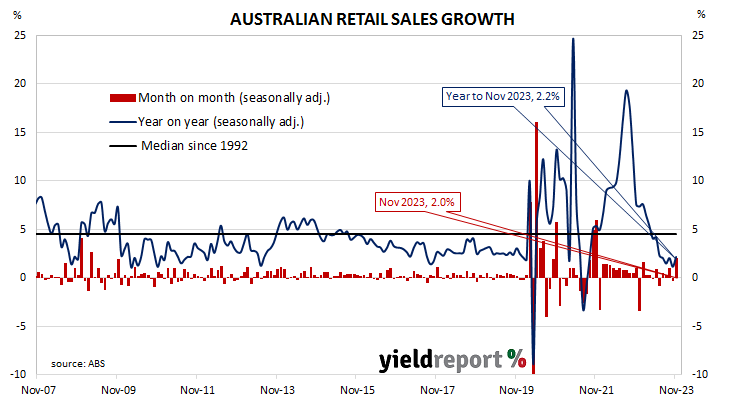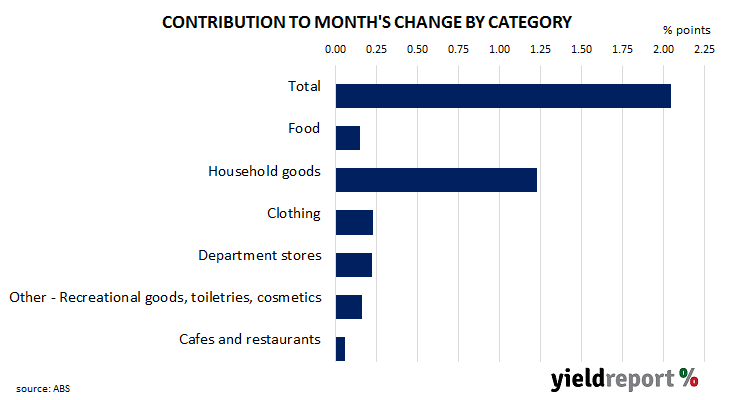Summary: Retail sales up 2.0% in November, greater than expected; up 2.2% on 12-month basis; ANZ: Black Friday effects affecting data; ACGB yields fall; rate-cut expectations firm; ANZ: November sales cannibalising spending in surrounding months; largest influence on result from household goods sales.
Growth figures of domestic retail sales spent most of the 2010s at levels below the post-1992 average. While economic conditions had been generally favourable, wage growth and inflation rates were low. Expenditures on goods then jumped in the early stages of 2020 as government restrictions severely altered households’ spending habits. Households mostly reverted to their usual patterns as restrictions eased in the latter part of 2020 and throughout 2021.
According to the latest ABS figures, total retail sales jumped by 2.0% on a seasonally adjusted basis in November. The rise was greater than the 1.2% increase which had been generally expected and in contrast with October 0.4% loss after revisions. Sales increased by 2.2% on an annual basis, up from October’s comparable figure of 1.2%.
“While this would usually represent very strong monthly growth, the growing importance of Black Friday sales in recent years means the impacts are not fully accounted for in seasonally adjusted data,” said ANZ senior economist Adelaide Timbrell.
The figures were released at the same time as the latest dwelling approval numbers and Commonwealth Government bond yields moved lower on the day. By the close of business, the 3-year ACGB yield had lost 7bps to 3.71%, the 10-year yield had shed 5bps to 4.12% while the 20-year yield finished 6bps lower at 4.41%.
In the cash futures market, expectations regarding rate cuts later this year firmed. At the end of the day, contracts implied the cash rate would remain close to the current rate of 4.32% and average 4.33% through February, 4.32% in March and 4.305% in April. August contracts implied a 4.085% average cash rate while November contracts implied 3.915%, 40bps less than the current rate.
“Black Friday sales tend to cannibalise spending in surrounding months,” added Timbrell, “and we expect December retail sales to fall, as they have in seasonally adjusted terms every year since 2019.”
Retail sales are typically segmented into six categories (see below), with the “Food” segment accounting for 40% of total sales. The largest influences on the month’s total came from the “Household goods” segment where sales rose by 7.5% over the month.



